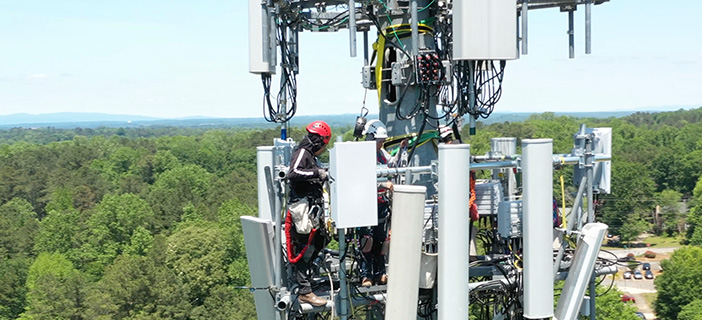5G calls for fundamental changes in network architecture and technician knowledge, as well as the deployment of fiber deeper into the network. To make sure those changes are successful and 5G transformations are done right the first time, operators and contractors need to revamp their testing and monitoring practices and choose test tools that are agile and modular. Equipment must be installed right the first time—tested on the spot to reduce (or preferably eliminate) the need for future, troubleshooting-related return truck rolls.
Small cells are dominating 5G architecture
Small cell densification—10-20x more—within urban environments is required to power 5G communication. More street-level small cells are needed to deliver on the lower latency, increased throughput, improved reliability and better coverage required to successfully deliver 5G services. And at that fast pace of deployment, having the right testing processes in place—ones that speed up the entire process while not skipping critical tests—will be imperative.
A challenge for operators and contractors is making sure radio units are working properly and that all beams are transmitting correctly. Tools like RF spectrum analyzers can demodulate 5G NR signals and confirm proper transmission. With 4G being the backbone to non-standalone (NSA) architecture, poor 4G performance equates to poor 5G experience. Therefore, it is important to ensure that cell sites are not affected by RF interference or PIM issues.
Field technicians need to do more—and do it right the first time
Field technicians need to master the installation and turn up of 5G-related equipment while continuing to support the 4G LTE infrastructure for years to come. And they need to be able to do it all very fast. Being able to do more in the midst of new, emerging technologies means a rethink of current processes, with automation—one-button, intelligent testing—being vital to the ability to deliver ultra-fast and accurate fiber connections. Improving field-tech efficiency—by using the right tools and processes to identify and troubleshoot from day one—can represent a time savings of 90%, a necessary improvement. Watch how NIS, a premiere provider of intelligent infrastructure, prepares for a job and why testing is critical for accelerating 5G deployments.
More fiber, deeper into the network demands thorough testing
Because of all the new requirements (i.e., low latency, more bandwidth), technologies like eCPRI and higher line rates (i.e., 25G, 100G) that 5G is imposing on the network, testing practices must evolve to follow suit. Where 4G networks were quick to forgive bad splices or bad connections, 5G networks can’t and won’t. So, unless thorough 5G testing practices are strictly followed, failure rates on new 5G deployments will increase. 5G testing procedures should include fiber connector inspection, fiber link characterization, CPRI/eCPRI radio link validation, timing and synchronization, and RF spectrum analysis. If properly performed—using optimized automated processes—operators can turn up 5G right the first time and begin monetizing their investment sooner than later.

